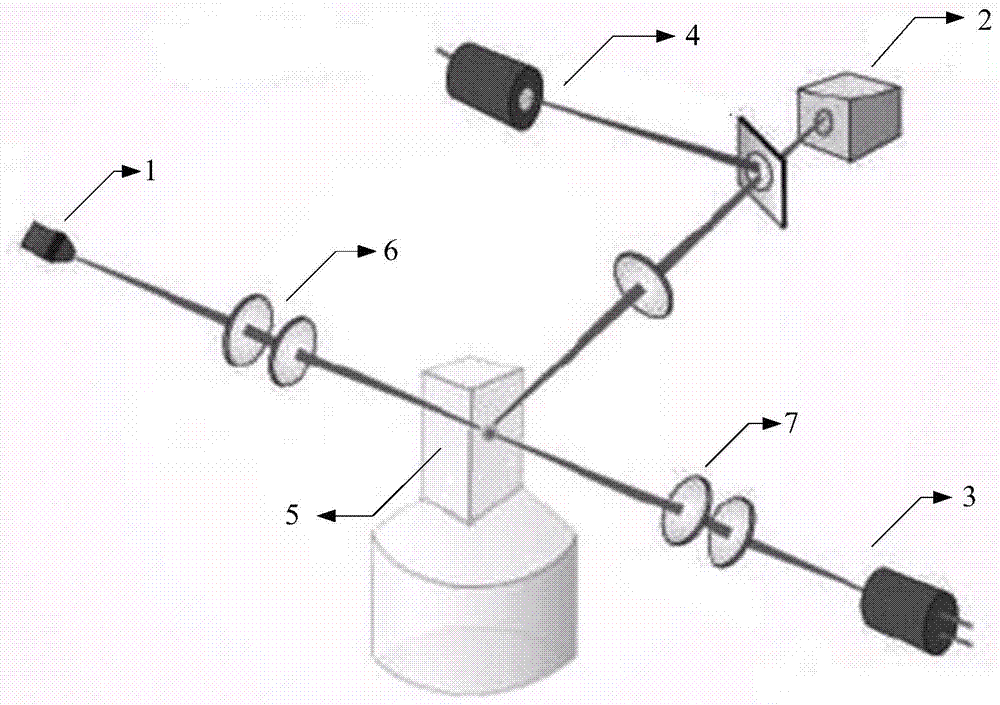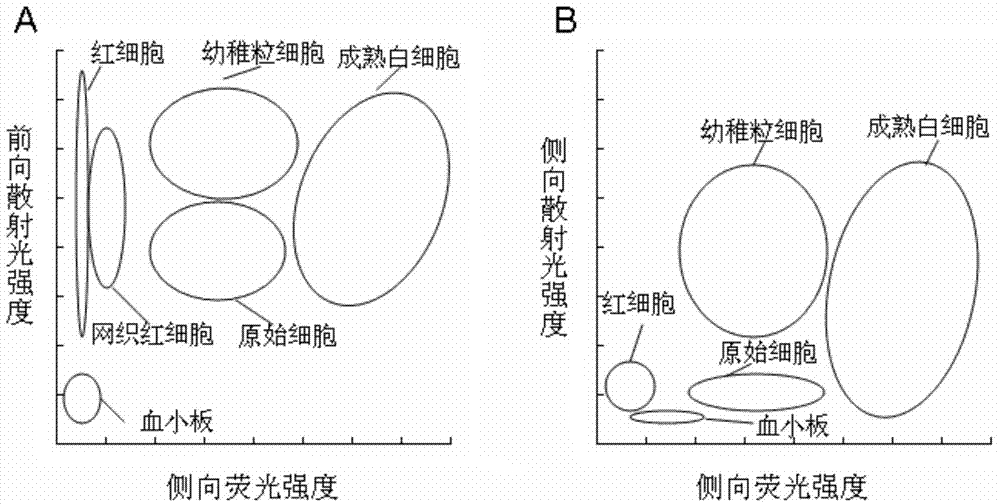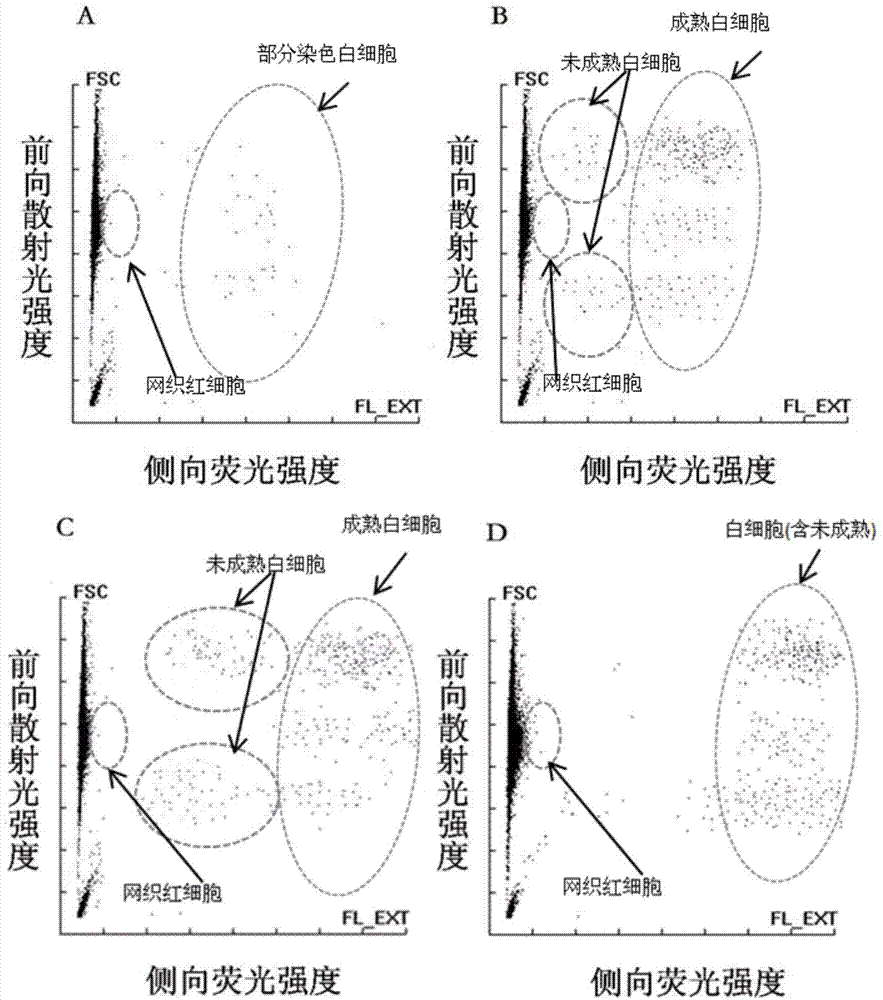Blood cell detection reagent, blood cell processing method and blood cell identification method
A technology for detecting reagents and blood cells, which is applied in the field of blood cell detection, can solve the problems of red blood cell debris interference, white blood cells destroying the internal morphological structure information of white blood cells, no simultaneous detection of immature white blood cells, white blood cells and reticulocytes, etc., to achieve increased membrane permeability Effect
- Summary
- Abstract
- Description
- Claims
- Application Information
AI Technical Summary
Problems solved by technology
Method used
Image
Examples
Embodiment 1
[0066] Prepare blood cell detection reagent A with the following composition:
[0067]
[0068] The pH is 7.5 and the osmolarity is 642 mOsm / kg.
[0069] Add 4 μL of fresh anticoagulated blood (the anticoagulated blood has been checked by traditional manual microscopy, and the blood sample contains reticulocytes and immature white blood cells) into the above 1mL detection reagent A, and mix them separately under the condition that the temperature is kept at 42°C After incubation for 3.6 seconds, 12.6 seconds, 32.6 seconds and 62.6 seconds, the cells were detected by laser flow cytometry (excitation wavelength 633-635 nm).
[0070] The fluorescence intensity information of the cells is measured by measuring the side fluorescence at an angle of 90 degrees, and the forward scattered light intensity information of the cells is measured by measuring the forward scattered light at a low angle of 1-10 degrees. The two-dimensional scatter diagram formed by the forward scattered li...
Embodiment 2
[0072] Prepare blood cell detection reagent B with the following composition:
[0073]
[0074] The pH is 7.9 and the osmolarity is 229 mOsm / kg.
[0075] Add 4 μL of fresh anticoagulated blood (the anticoagulated blood has been inspected by traditional manual microscope, and the blood sample contains reticulocytes) into the above 1mL detection reagent B, keep the temperature at 40°C, mix for 30 seconds, and use a laser Cells were detected by flow cytometry (excitation wavelength 633-635nm).
[0076] Measure the fluorescence intensity information of the cells by measuring the side fluorescence with a measurement angle of 90 degrees, measure the forward scattered light intensity information of the cells by measuring the forward low angle 1-10 degree scattered light, and use the side scattered light with a measurement angle of 90 degrees Measure the side-scattered light intensity information of the cells.
[0077] On the two-dimensional scatter diagram formed by forward scat...
Embodiment 3
[0080] Prepare blood cell detection reagent C with the following composition:
[0081]
[0082] The pH was 9.1 and the osmolarity was 274 mOsm / kg.
[0083] Add 4 μL of fresh anticoagulated blood (the anticoagulated blood has been inspected by traditional manual microscopy, and the blood sample contains immature granulocytes) into the above 1mL detection reagent C, keep the temperature at 42°C, mix for 27 seconds, and use a laser Cells were detected by flow cytometry (excitation wavelength 633-635nm).
[0084]Measure the fluorescence intensity information of the cells by measuring the side fluorescence with a measurement angle of 90 degrees, measure the forward scattered light intensity information of the cells by measuring the forward low angle 1-10 degree scattered light, and use the side scattered light with a measurement angle of 90 degrees Measure the side-scattered light intensity information of the cells. The two-dimensional scatter point formed by the intensity of ...
PUM
| Property | Measurement | Unit |
|---|---|---|
| concentration | aaaaa | aaaaa |
Abstract
Description
Claims
Application Information
 Login to View More
Login to View More - R&D
- Intellectual Property
- Life Sciences
- Materials
- Tech Scout
- Unparalleled Data Quality
- Higher Quality Content
- 60% Fewer Hallucinations
Browse by: Latest US Patents, China's latest patents, Technical Efficacy Thesaurus, Application Domain, Technology Topic, Popular Technical Reports.
© 2025 PatSnap. All rights reserved.Legal|Privacy policy|Modern Slavery Act Transparency Statement|Sitemap|About US| Contact US: help@patsnap.com



